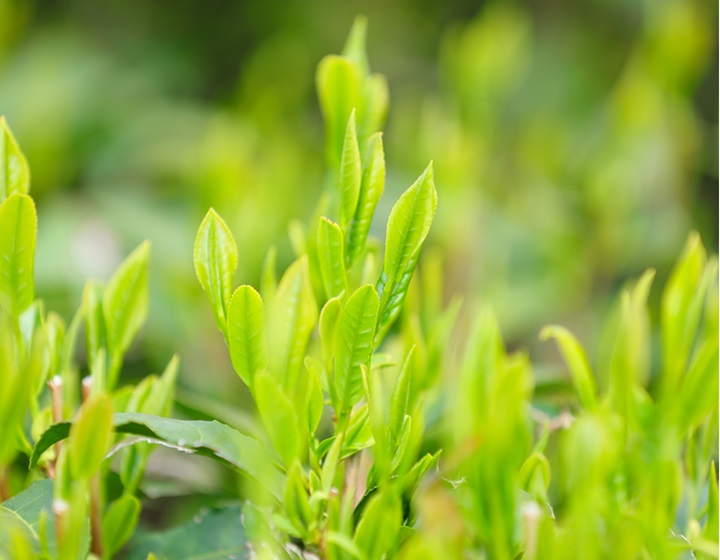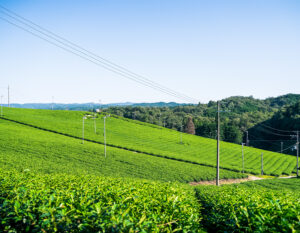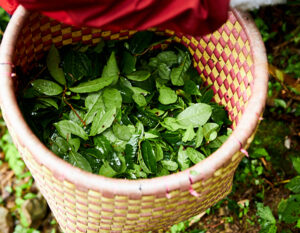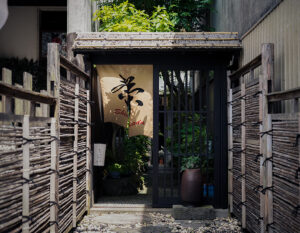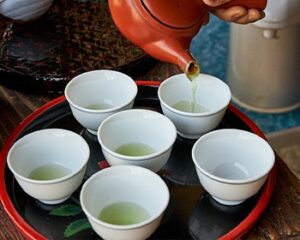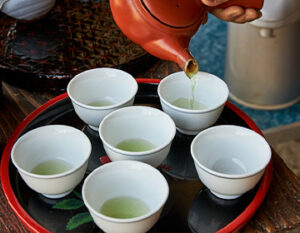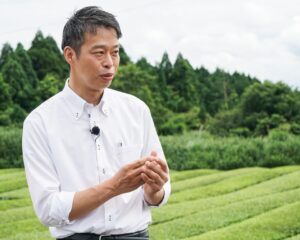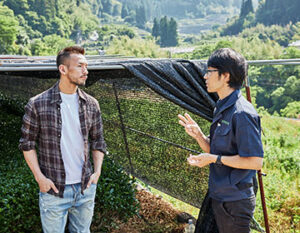Hekien Tea Junpei, located in Toyota City in the northern part of Aichi Prefecture, runs an integrated tea business from growing tea leaves to tea production and sales under the company motto, “Providing good tea to customers at a reasonable price. He won the Minister of Agriculture, Forestry and Fisheries Award at the 2003 National Tea Fair (Shizuoka) and the following year at the National Tea Fair (Aichi). Mr. Yamauchi, who is dedicated to the cultivation of high-quality tea, is now striving to reestablish a coffee culture in which green tea is enjoyed in daily life in this age of diversifying beverage options.
Tea plantation that has been passed down since 1872
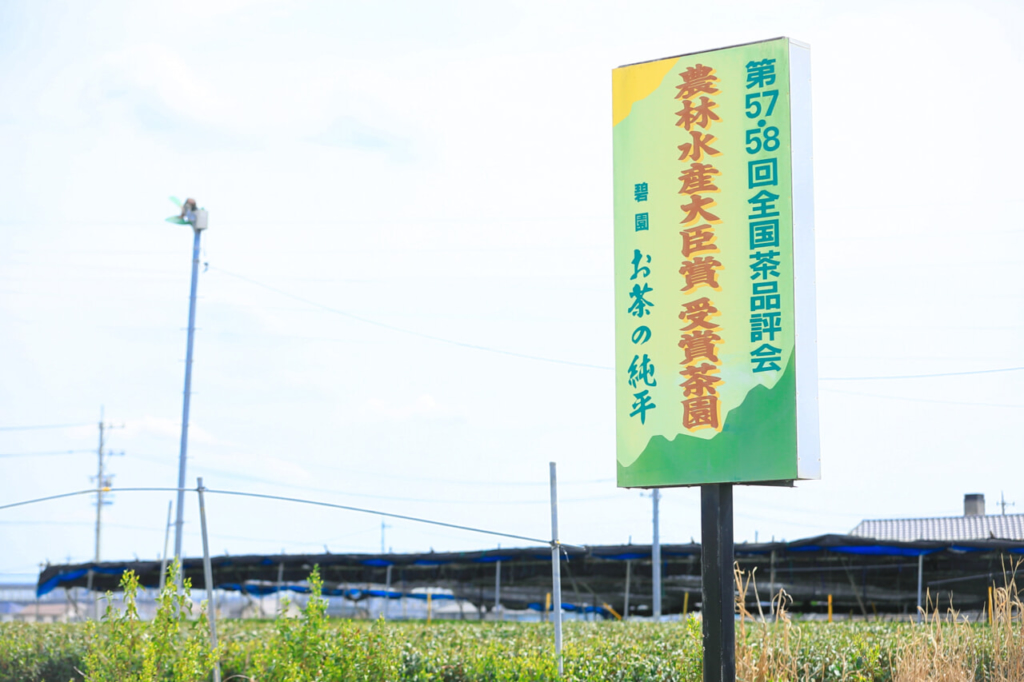
Toyota City in Aichi Prefecture is a corporate castle town where a major automobile manufacturer is located. Although the impression is that the manufacturing industry is thriving in the city, it is in fact surrounded by mountains and rich in nature. One of the thriving industries in Toyota City is the tea industry. The origin of this industry is said to date back to the Edo period (1603-1867), but it was not until the Meiji and Taisho periods (1868-1912) that the number of tea plantations increased and the industry flourished.
Originally, the area surrounding Toyota City had a mild climate, fertile soil, and abundant water, making it an ideal environment for tea production. In addition, the population of the area grew as modern industry flourished, a characteristic unique to the area. These two factors were major factors in the development of the tea industry.
The second generation’s greatness, which is also attached to the store name
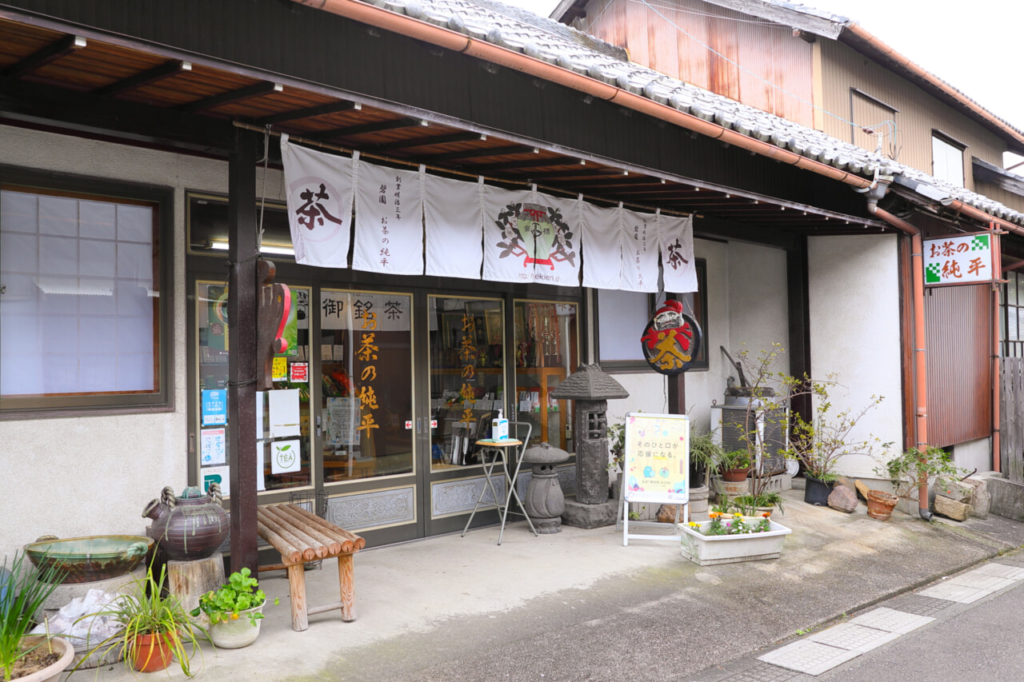
Established in 1870, Hekien Tea Junpei handles all aspects of tea production from cultivation to tea making and sales. The seemingly unique trade name is named after the company’s second generation owner, Mr. Junpei Yamauchi. Mr. Junpei Yamauchi is well known in the industry as the creator of the “Mikawa-style tencha machine,” which is said to be the prototype of the “tencha machine” used in Japan today to produce “tencha,” the raw material for powdered green tea.
Tencha, as mentioned above, is the raw material for matcha, and refers to the state of the leaves before they are powdered. Like gyokuro, which is classified as one of the highest-grade Japanese green teas, the characteristic feature of this tea is that it is grown slowly and painstakingly under a shading material. Covered cultivation has the advantage of reducing the amount of light to suppress photosynthesis in the tea leaves, thereby reducing tannin, which is the source of the tea’s astringency, and mellowing the taste, while also allowing the leaves to spread wide and grow bright, dark green as they receive the maximum amount of sunlight. One major difference between gyokuro and gyokuro is that gyokuro does not go through the “rubbing” process in the manufacturing stage. In gyokuro, the tea leaves are rubbed to break down the cells so that the flavor can seep out easily, but in tencha, the tea leaves are not rubbed so that they can be ground easily and the cells are not broken because they are supposed to be ground into powder using a millstone.
Until around the Meiji era (1868-1912), the production of tencha was done by hand, but there was an urgent need to develop a tencha machine to cover the labor shortage caused by World War I, which occurred in the middle of the Taisho era (1912-1926). At that time, tea production areas such as Kyoto and Shizuoka also invented tencha machines, but the Mikawa-style machine invented by Junpei is said to be one of the earliest tencha machines. This device had a simple structure: a drying room about 7 meters long, 1 meter wide, and 2 meters high was built of bricks, a boiler was placed at the bottom, and steamed tea leaves were spread out on a rail attached at a height of about 50 cm from the bottom and pushed forward to dry by hand. In the handmade era, however, tea leaves were dried by hand on a workbench called a hoiro (roasting furnace), and the temperature of the furnace could only rise to about 120°C. With the advent of this equipment, however, the temperature of the furnace has risen to 180 to 200°C, and the quality of tencha has improved dramatically compared to the handmade days. In addition, the quality of the tea was stabilized due to the improved efficiency of the production process and the uniformity of the technology made possible by the mechanization. Junpei’s contribution to the development of the Tencha industry in Toyota City is said to have been significant, as he spread the word to other tea growers in the area.
Since then, improvements have been made in many areas of the country, and today, the process of steaming, cooling, drying, and separating the leaves from the stems can be done in a single process.
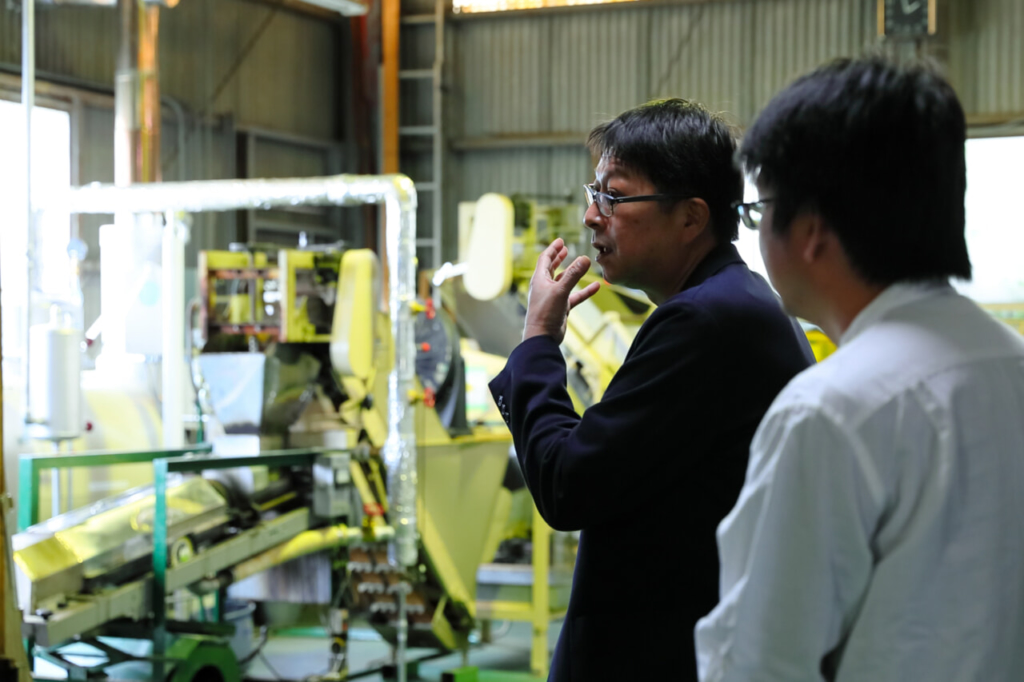
The company has inherited the spirit of such a great second generation. Mr. Shomasa Yamauchi, great-grandson of Mr. Junpei, currently serves as the fifth generation.
What does Shomasa consider “good tea”?
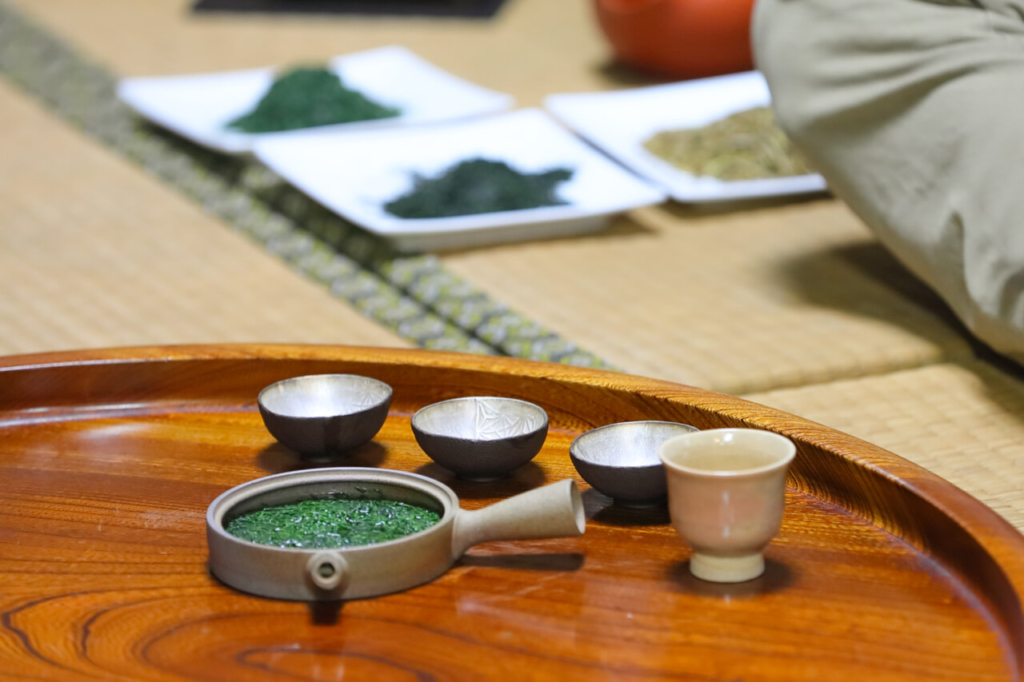
After the second generation, Mr. Junpei Yamauchi, made a great contribution to the modernization of the tencha industry, the third generation, Mr. Takeyoshi Yamauchi, expanded the cultivation area and laid the foundation for tea sales. The fourth generation, Kimio Yamauchi, expanded the sales channels nationwide, and the fifth generation, Shomasa Yamauchi, received the “Minister of Agriculture, Forestry and Fisheries Award” and the “Prime Minister’s Award” at tea fairs. The company is the first tea producer in Aichi Prefecture to receive the “Prime Minister’s Award” in recognition of its honest tea production, as well as its community contribution activities, such as offering tea-picking experiences and lectures on tea culture, and serving tea to local residents.
Mr. Shomasa, who has devoted himself to the development of tea in a wide range of fields, has arrived at the definition of “good tea” as tea that has 100% of the power of the “tree” itself that sprouts the tea leaves. If the sprout of a tea plant has 100 points, our skill is to make tea without reducing the number of points from the top. For example, it is sweeter to eat the morning harvest right away compared to corn that has been harvested for a long time. In the same way, tea leaves have freshness. In our tea garden, tea is basically made within two hours of being picked,” Shozheng said, revealing his company’s commitment.
The company’s tea plantations grow different varieties of tea leaves from mountainous areas to flatlands. In the mountainous areas, where temperatures are cooler, they plant late harvesting varieties such as “Okumidori,” while in the plains, they plant early harvesting varieties to shift the harvest time as much as possible. By shifting the timing of sprouting, it is possible for limited staff to pick tea at the right time.
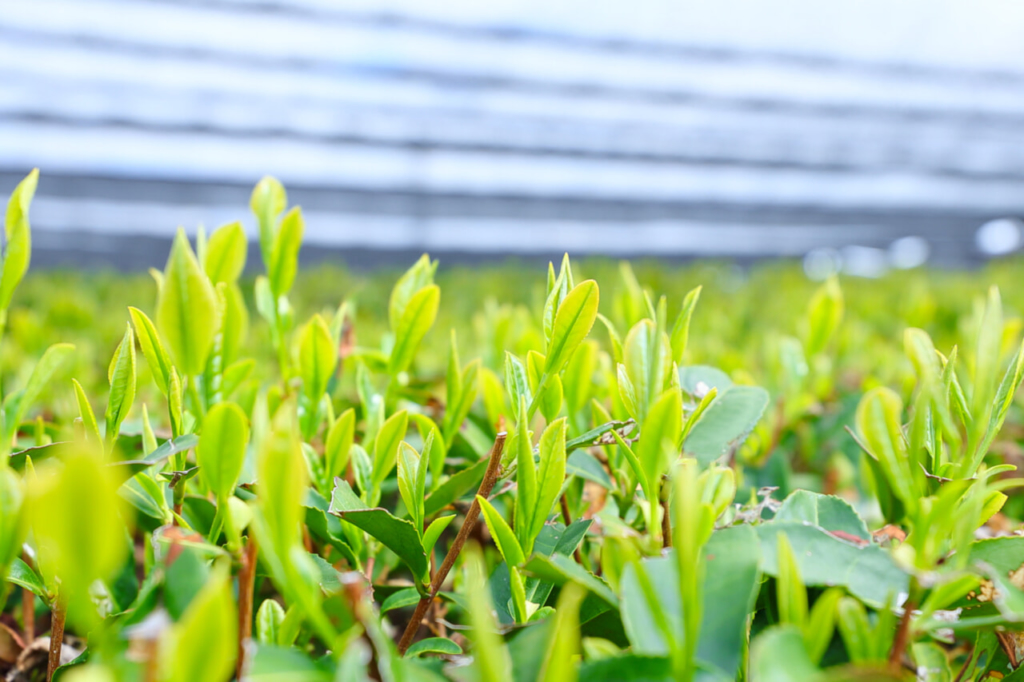
The tea produced in Toyota City is characterized by the fact that it is not heated as much as possible so that the original fresh aroma of the tea leaves can be enjoyed as it is. Therefore, the growing environment directly affects the flavor of the tea. That is why the company is thorough in creating an environment in which the roots are firmly rooted in the soil and the tea leaves absorb all the fertilizers given to them to grow strong tasting tea leaves.
The company manages its tea fields separately for hand-picked tea and machine-picked tea. In the case of hand-picked tea, the “one core, two leaves” method is basically used, where the “core,” which is the bud that has not yet opened, and the two tender leaves below it are picked from the tip of a single branch. This method is more cost-effective than mechanical picking, but it is not possible to pick all the leaves by hand. Is taste more important or is cost more important? The company makes different types of products to meet the needs of both types of consumers.
Delicious tea comes from the sense of touch.
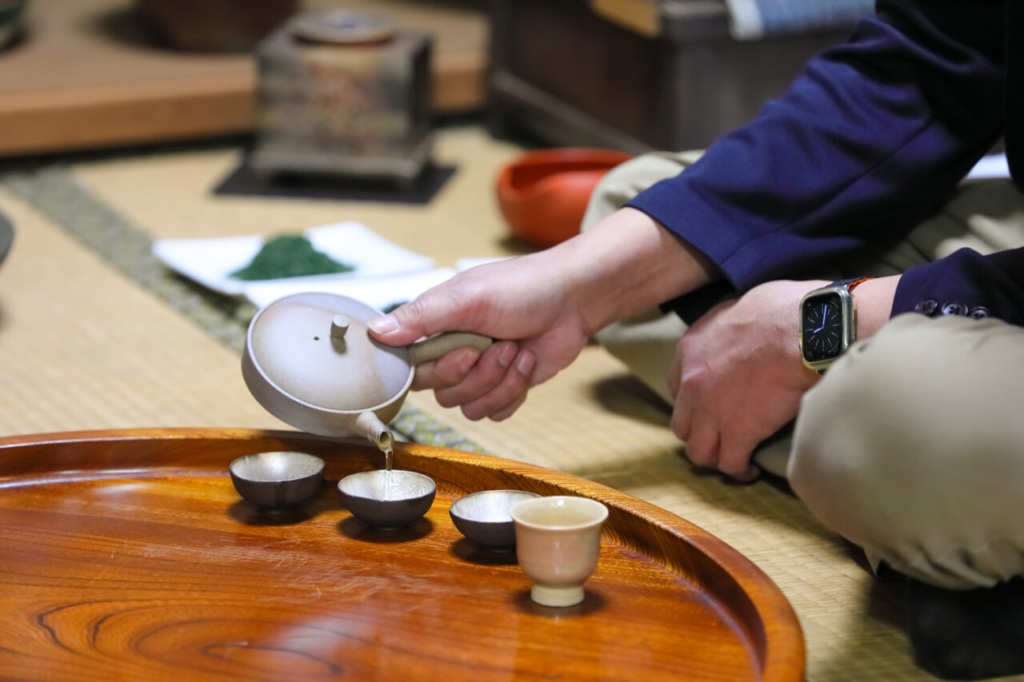
Once plucked, the tea leaves are steamed and then dried while being rubbed. Currently, the company uses machines for the rubbing process for productivity reasons, but it is the experience of skilled craftsmen that makes important decisions when switching from one process to another. They grasp the tea and check with their hands to see how much moisture is left in the tea and how the tea is twisted before proceeding with the process. The “hands” of the craftsman are involved in the process. This is what makes a good tea.
The mindset of being a first-year student every year
Shomasa says that every year he works with the mindset of a “first-year tea maker. Although he has inherited the logbooks that have recorded machine settings and temperatures for generations, no two teas are ever the same, even if they are made at the same time in the same tea plantation. Because nature is the partner of tea production, it is difficult to quantify the process, and that is why it is so gratifying when the tea is produced exactly as intended.
The reason why he is so happy is not because he is satisfied with the quality of the product, but because he is able to deliver a product to the market that he is confident is delicious. At the core of the company’s business is always the desire to make consumers truly happy when they drink the tea they produce.
Their son Masahiro, now the sixth generation, is also involved in the tea business. His passion and effort for tea production, which is second to none, has transcended the ages and is being passed on to the next generation.



